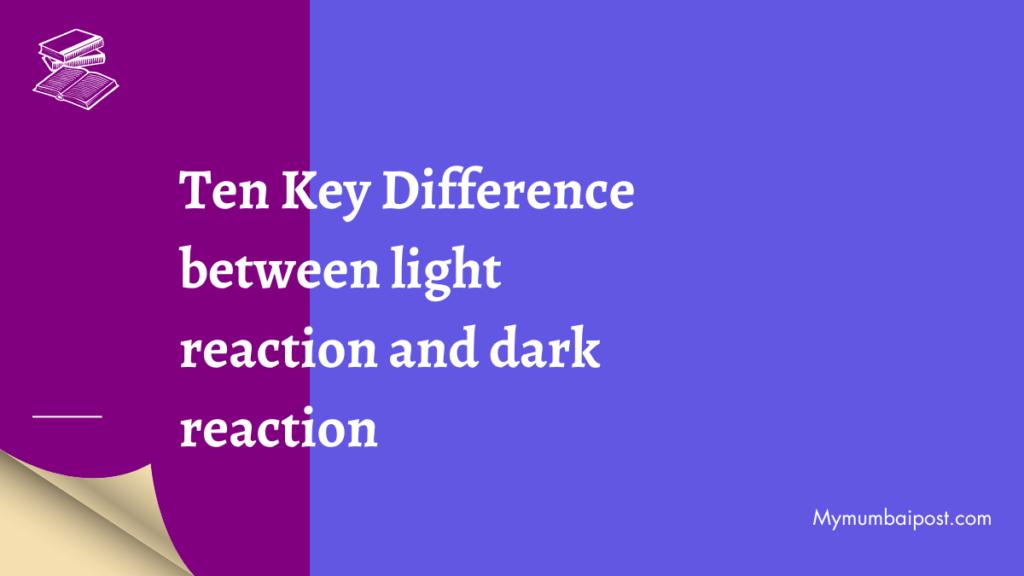
Discover Ten Key Difference between light reaction and dark reaction
Have you ever wondered how plants produce their food? Well, photosynthesis is the process responsible for it. The process is divided into two stages, light reaction and dark reaction, which differ in several aspects. Here are ten key difference between light reaction and dark reaction and please do share with class mates.
Difference between light reaction and dark reaction
Photosynthesis is one of the most important biochemical processes that occurs in plants, algae, and some bacteria. It involves the conversion of light energy into chemical energy that is stored in the form of glucose. The process of photosynthesis is divided into two main stages: the light-dependent reactions and the light-independent reactions, which are also known as the dark reactions or the Calvin cycle. Here are 10 key difference between the light-dependent and light-independent reactions of photosynthesis.
Energy source: The light-dependent reactions require light as an energy source, while the light-independent reactions do not require light.
Location: The light-dependent reactions occur in the thylakoid membranes of the chloroplasts, while the light-independent reactions occur in the stroma of the chloroplasts.
Also Read: Understand the Ten Difference between impulse and reaction turbine
Products: The light-dependent reactions produce ATP and NADPH, which are used in the light-independent reactions, while the light-independent reactions produce glucose.
Role of chlorophyll: Chlorophyll is required for the light-dependent reactions to occur, as it absorbs light energy. Chlorophyll is not directly involved in the light-independent reactions.
Carbon dioxide: The light-independent reactions require carbon dioxide, while the light-dependent reactions do not.
Also Read: Understand the TEN Difference between Mountain and Plateau
Enzymes: The light-independent reactions are catalyzed by enzymes such as rubisco, while the light-dependent reactions do not require enzymes.
Dependence on temperature: The light-dependent reactions are not affected by temperature, while the light-independent reactions are affected by temperature.
Dependence on light intensity: The rate of the light-dependent reactions is directly proportional to the intensity of light, while the rate of the light-independent reactions is not affected by light intensity..
Also Read: Discover 10 Key Difference between Globe and Map
Oxygen production: The light-dependent reactions produce oxygen as a by-product, while the light-independent reactions do not produce oxygen.
Time of occurrence: The light-dependent reactions occur during the day when there is light, while the light-independent reactions occur throughout the day and night.
The light-dependent and light-independent reactions of photosynthesis are two distinct processes that work together to produce glucose, the main source of energy for plants and other photosynthetic organisms. Understanding the differences between these two reactions is crucial for comprehending the complex process of photosynthesis.
Explore this video to learn more: